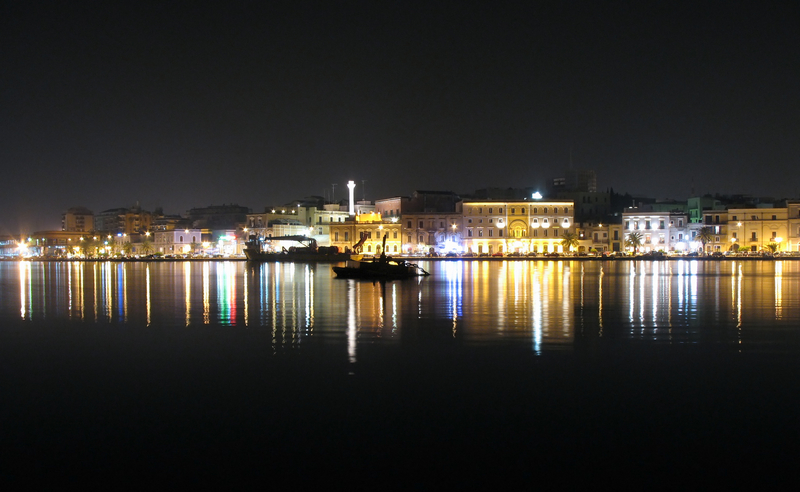From serving as the capital of Brindisi province to being a significant center of history and culture and a tourist spot with beautiful beaches and natural areas, Brindisi, Italy, is an ideal destination for holiday travelers.
Brindisi has had an important commercial role both historically and currently.
It is a vital location in the heel of Italy’s boot and is a natural port on the Adriatic Sea. It has developed energy and chemical production and agriculture, and it is a primary port for trade with the Middle East and Greece.
 Brindisi’s history dates back to the Bronze Age, through Greek settlement before Rome expanded, and then became a focal point of the Roman Navy and sea trade. After being conquered by the Byzantine Empire and destroyed by the Lombards, the city was rebuilt because of its prized natural harbor. The city continued under foreign rule during the Middle Ages, and then later as the temporary Italian capital during part of World War II.
Brindisi’s history dates back to the Bronze Age, through Greek settlement before Rome expanded, and then became a focal point of the Roman Navy and sea trade. After being conquered by the Byzantine Empire and destroyed by the Lombards, the city was rebuilt because of its prized natural harbor. The city continued under foreign rule during the Middle Ages, and then later as the temporary Italian capital during part of World War II.
Brindisi is accessible by air, land, and sea. The Papola-Casale Airport is 6km from the city and has daily flights to and from main cities of Italy and Europe.
An interesting fact about the airport is that because of the tactical location of the airport near the Mediterranean, it serves as the primary base for the United Nations to carry out its peacekeeping operations over the entire world and is a base for aid to Eastern Europe and Africa. For ground transportation,
Brindisi is close to two main roads: the Bari-Lecce Expressway and the Adriatica SS 16. The Brindisi Railroad station is on the link of the Apulian Railway and connects Brindisi to cities on the Ionian and Adriatic Coast.
Travelers can reach Brindisi by sea as the Public Transport Company that offers public transportation within the city and to other provincial towns also operates service by sea in the inland waters of Brindisi’s port. Other companies provide ferry service to Greece and other major ports.
Visitors will find most of Brindisi’s attractions related to the city’s history or the natural areas. For the history buffs, tour the following sites.
The two ancient Roman columns, which are Brindisi’s symbols, were a point of orientation for sailors in times of old. One is still standing.
The Castello Svevo or Castello Grande or Hohenstaufen / Large Castle constructed by Emperor Frederick II. It was designed with a trapezoid plan and then renovated. Serving later as a prison, it was also home for King Victor Emmanuel during the World War II.
The Arragonese Castle, or Sea fort, was built in the late 1400s on S. Andrea Island across from the port.
Brindisi’s churches reflect the history and architecture of the town. Church of San Benedetto in the Romanesque style before the 11th century, the Duomo (Cathedral) in Romanesque design from the 11th – 12th century, Church of Santa Maria del Casale, the Gothic-Romanesque design, is from the 13th century. in addition, other churches from the Medieval and Renaissance times.
Brindisi’s area has natural areas that are protected. These include the Regional National Park of Punta della Contessa Salt, a wetland; the Regional Nature Preserve Bosco of Santa Teresa and Lucci; the Regional Nature Reserve Forest Cerano; and the Marine Nature Reserve Cauceto tower.





